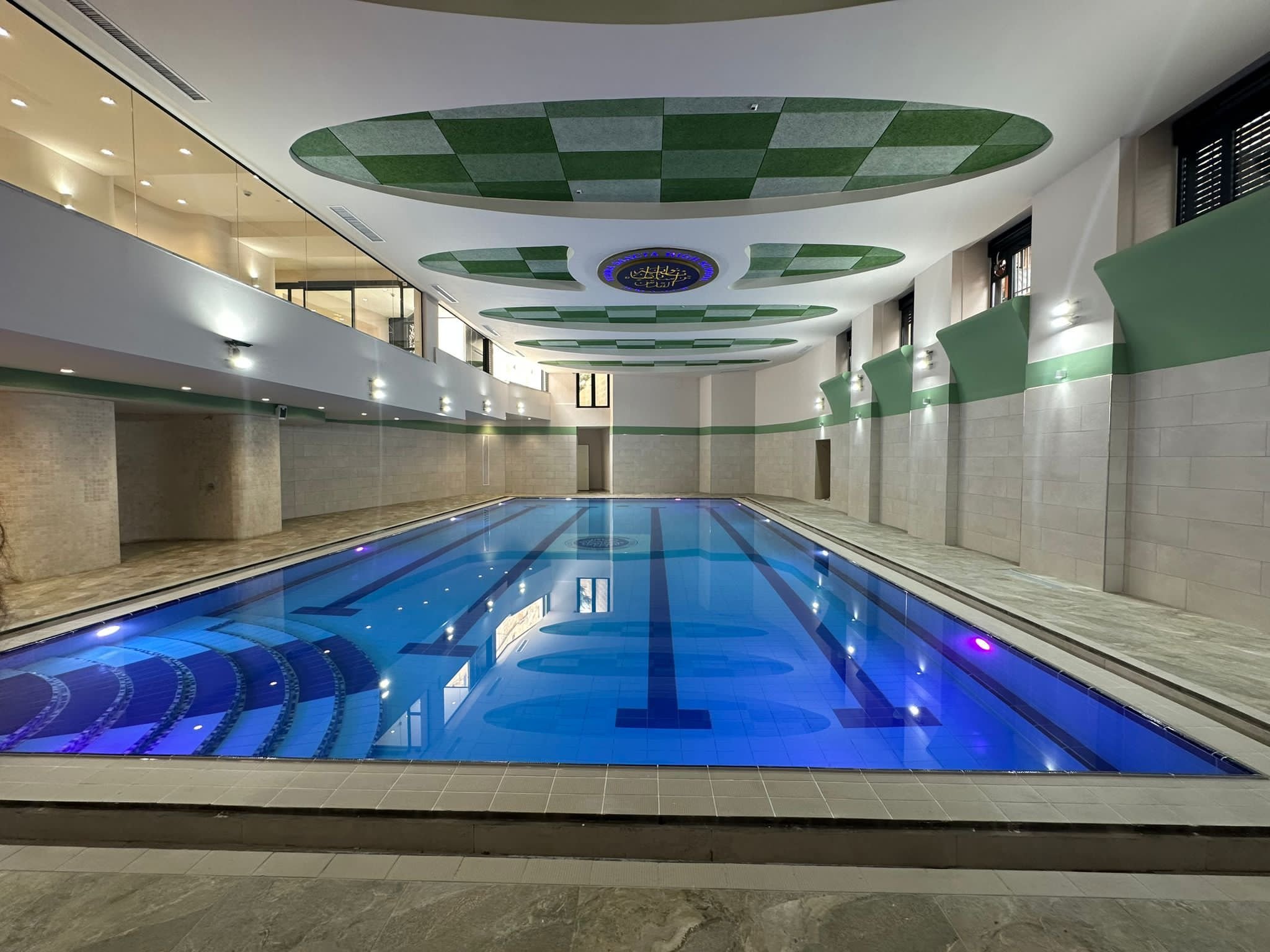First Swimming Pool Opens in the Old City Of Jerusalem With an Interfaith Splash
JERUSALEM — After four years of excavation, archaeological preservation, extensive engineering work and construction — and just in time for the sweltering heat wave now baking Jerusalem — an indoor swimming pool was inaugurated July 3 at the Terra Sancta School in the Old City’s Christian Quarter.
The sports and cultural center in the Franciscans’ St. Savior headquarters inside the New Gate is the first of its kind in the historic walled city.
Attending the festive dedication of the underground complex were Pierbattista Pizzaballa, who has been the Latin patriarch of Jerusalem since 2020 and was recently appointed a cardinal by Pope Francis; Fathe. Francesco Patton, custos of the Holy Land; and representatives of the European Union, the French Development Agency and the French Consulate — all three of which funded the project.
Terra Sancta’s Jerusalem kindergarten to secondary school campus, founded in 1645, is part of the Franciscan network of schools extending across, Israel, the West Bank, Syria, Lebanon, Cyprus, Turkey and Egypt. Enhancing the historic school’s scholastic reputation, the complex — which includes a swimming pool, sauna, multi-use rooms and an outdoor sports field — will provide for the social and physical development of the residents of the Old City, said Father Ibrahim Faltas, 59, the Alexandria, Egypt-born monk who holds the title of vicar of the custody of the Holy Land.
How much did it cost to excavate four floors down and then build a swimming pool and the associated rooms?
“We spent a lot,” Faltas demurred, thanking the project architect Simon Kouha from Bethlehem, its coordinator Samir Pahdal and the donors.
“It was a crazy idea that no one believed in. When I thought about building a swimming pool here, nobody believed me. This sports center is very important for the Old City of Jerusalem, for its young people, because it will get them away from drugs. The people of Jerusalem and their children deserve a project like this,” the monk explained.
“Anyone who has visited the Old City surely knows how impossible it is to build a swimming pool because of the narrow alleys and the proximity of housing. But the Custody of the Holy Land didn't let that stop them: They dug down to about 15 meters to allow the construction of the center,” he said. “We built in an unimaginable place. We faced multiple difficulties and obstacles, and sometimes we had to dismantle the structure and rebuild it. It was a nightmare, sometimes a mix of fantasy and madness. Excavation was not always easy either. Since the area is an archaeological zone, remains of a well and a church dating back to Byzantine times were found during the work. A small museum, created inside the sports center collects a number of artifacts.
“Everyone has been affected by the pandemic, even the residents of Bethlehem who live mostly from tourism,” Faltas said. “They worked here day and night, and that helped us get the job done. Let me tell you something: We did not take away dust, but we leafed through a history book. Every meter we wrote a book of anthropology, history and geography.”
Officially called Capital of Resurrection, the center symbolizes peace rather than violence. “It is not humiliation but dignity,” Faltas said. “This is Jerusalem. On the foundation stone of the project the custody placed a prayer from the founder of the order, St. Francis of Assisi, ‘Lord, make me an instrument of your peace.’”
While officially part of a denominational school system, Faltas pointedly noted the swimming pool is open to all. “Jews, Christians, Muslims — we don’t distinguish between people. We are all brothers,” he said.
The pool is open daily from 8 a.m. to 8 p.m. The hours will be extended if the demand is there. Faltas plans to introduce swimming courses soon.
The Franciscan friar was elected Vicar of the Custody of the Holy Land during the 2022 chapter. He was discreet of the Custody of the Holy Land from 2016 to 2022. From 1969 to 1982 he studied and graduated from the Franciscan School of Kafred Dawar-Alexandria. From 1982 to 1985 he attended the Franciscan Oriental Institute of Giza, Egypt and graduated with a degree in philosophy. After completing his two-year compulsory military service, he studied from 1988 to 1992 at Jerusalem’s Studium Teologicum Jerosolytanum, obtaining a bachelor’s degree in theology. Ordained a priest in the Order of Friars Minor — Custody of the Holy Land, from 1993 to 1995 he served as director of the Headnurse School in Jericho. Since 1995 he has been director of the College of the Holy Land in Bethlehem as well as responsible for the Status Quo in the Basilica of the Nativity in Bethlehem.
Faltas is intimately aware of the conflict between Israelis and Palestinians. During the armed siege of the Basilica of the Nativity in Bethlehem in 2002, he served as a mediator between the Palestinian gunmen and the IDF. That experience led him to write the Italian-language book “The Siege of the Basilica of the Nativity.”
Gil Zohar was born in Toronto, Canada and moved to Jerusalem, Israel in 1982. He is a journalist writing for The Jerusalem Post, Segula magazine, and other publications. He’s also a professional tour guide who likes to weave together the Holy Land’s multiple narratives.

